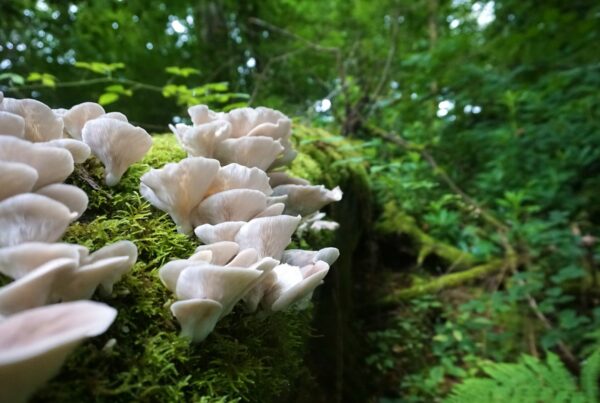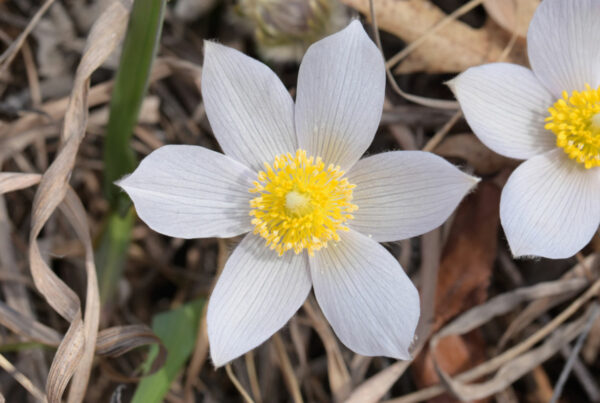Many of the wild plants you pass by regularly while walking outside are edible and have medicinal compounds that can heal the human body.
For thousands of years, traditional cultures from across the world have used medicinal plants for a whole range of health conditions. Even today, most of the therapeutic compounds in modern pharmaceuticals are derived from plants, trees and fungi species.
If you want to learn more about medicinal plants and herbs for healing I’d recommend seeking out teachers and herbalists trained in local First Nations traditions, Traditional Chinese Medicine, Ayurveda or the Doctrine of Signatures.
If you want to learn to start identifying edible and medicinal plants, it’s a good idea to start with these 10 wild plants that grow abundantly throughout BC and Alberta.
Keep an eye out for them on your next stroll in the park or hike in the mountains and you’ll be surprised to see them growing everywhere.
Safety Warning: If you want to learn to forage wild edible plants to eat or for medicinal use, please seek out a local guide or join a local herbalist society so you can learn to do it safely and ethically (plants can only be foraged legally without a permit on public Crown Land in Canada).
Want to learn how to identify native plants and mushrooms in your area? Get my digital field guides for identifying flora, fauna and fungi.
1. Fireweed

Photo Credit: Jason Grant on iNaturalist
Scientific Name: Chamaenerion angustifolium
Season: May – September
Fireweed grows along sunny meadows, roadways and the edges of forests. All parts of Fireweed are edible and different parts are used for salads, garnishes and to make jelly but you need to get them early in the season when the plant is young and fresh.
This medicinal plant is known for its anti-inflammatory properties and antiseptic compounds. It was traditionally used by European cultures and First Nations people in the treatment of colds, cramps, tonsillitis and for preventing infection of wounds.
2. Wild Rose

Photo Credit: Walter Fertigon on iNaturalist
Scientific Name: Rosa acicularis
Season: May – September
As Alberta’s provincial flower (BC’s provincial flower Pacific Dogwood is also highly medicinal), you will find Wild Roses growing abundantly in the Canadian Rockies and the prairies as well as throughout British Columbia from May to September.
All parts of this flowering plant can be used medicinally. It is known to have more vitamin C than oranges and it is also high in A, K and B vitamins. First Nations people make tea and salads from the leaves and use the inner bark to smoke tobacco.
3. Dandelion

Photo Credit: Masha on iNaturalist
Scientific Name: Taraxacum officinale
Season: April – May
Wait, aren’t invasive dandelions weeds? They may be growing everywhere for a reason. Dandelions are the quintessential spring foraging plant because after the long Canadian winters drinking dandelion root tea helps to clean and regulate the blood and lymphatic system.
They have edible and medicinal flowers, leaves and roots. Dandelions are similar in flavour to arugula or radicchio. They have anti-inflammatory, antioxidant properties and help to regulate blood sugar. Avoid them in urban areas where there may be pesticides used on the grass.
4. Mugwort

Photo Credit: Kristina Victoreenon iNaturalist
Scientific Name: Artemisia vulgaris
Season: April – October
Mugwort is often associated in lore and mythology with witches and bubbling cauldrons. It has powerful medicinal properties but it has to be specially prepared otherwise it doesn’t taste very good. It is recommended by doctors that pregnant women should not consume mugwort.
It is probably best known as the dreaming herb as it can be smoked or taken as a tea or tincture to enter into a relaxed meditative state, facilitate lucid dreaming and improve dream recall. It is also great for making infusions that go into baths to calm the nerves.
5. Yarrow

Photo Credit: Donna Pomeroy on iNaturalist
Scientific Name: Achillea millefolium
Season: May – October
Yarrow grows to a few feet tall at maturity, with feathery leaves and flowers that bloom in densely arranged clusters. It is one of the most widely used medicinal herbs today with an extensive list of medicinal properties.
Yarrow contains flavonoids, which are plant-based chemicals that increase saliva and stomach acid to help improve digestion. It is often used to relieve stomach, menstrual cramps and to stop bleeding. It is used by herbalists to stimulate blood circulation and lower blood pressure. It has a pleasant aroma and the leaves and flowers can be steeped in hot water to make herbal tea.
6. Bearberry
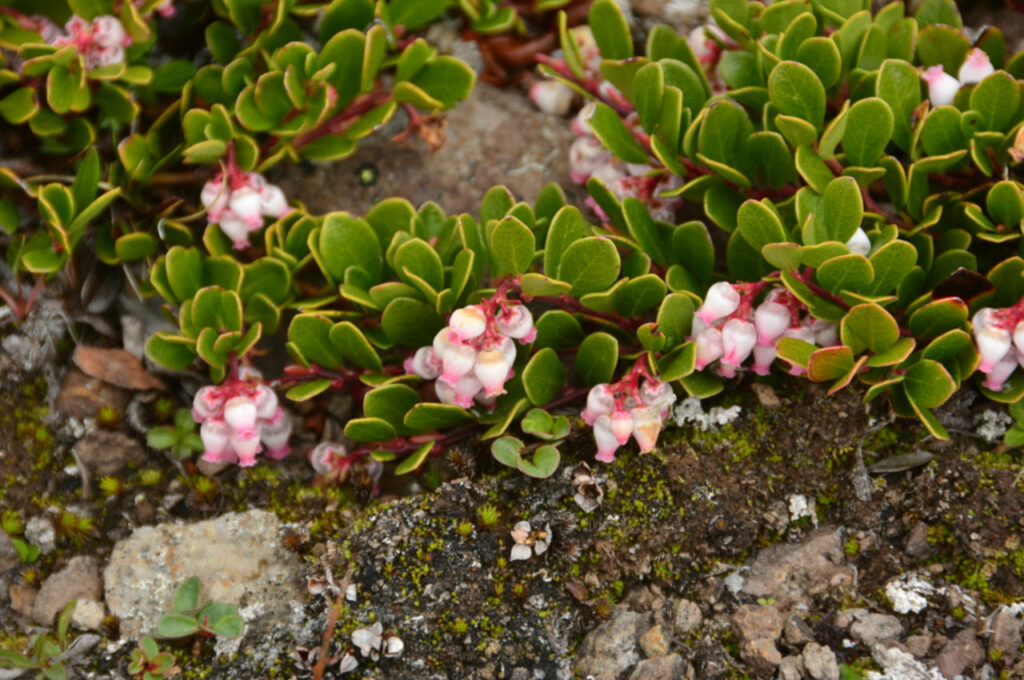
Photo Credit: Julia Carr on iNaturalist
Scientific Name: Arctostaphylos uva-ursi
Season: May – October (leaves are evergreen)
The Bearberry is a dwarf shrub known for its creamy pink flowers and red edible fruits. You will find it everywhere as ground cover in openings in the forests and grasslands. It is one of the top native plants recommended by the Alberta Native Bee Council to support pollinators as it is a magnet for attracting hummingbirds, butterflies and bees.
The berries of the Bearberry bush can be eaten raw but they taste much better cooked to bring out their sweetness. This plant is best known as the key ingredient in Kinnikinnick, a First Nations herbal smoking mixture, which they make from the dried leaves of the Bearberry plant and other plants. The dried leaves also make a relaxing herbal tea beverage.
7. White Sagebrush
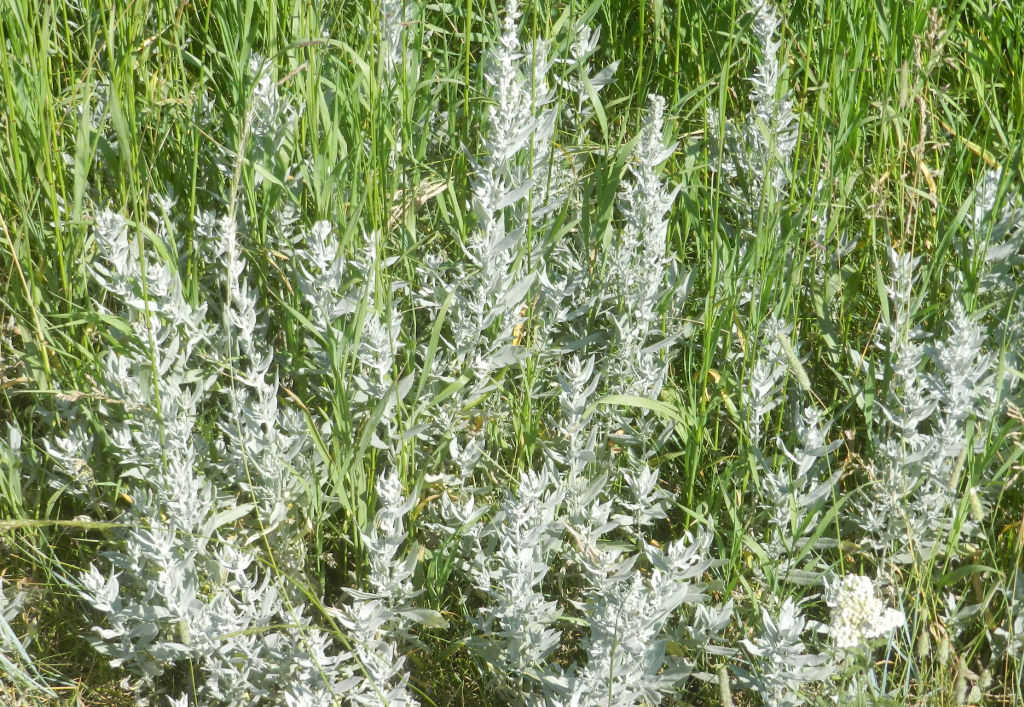
Photo Credit: Charles Thomas Hash, Jr. on iNaturalist
Scientific Name: Artemisia ludoviciana
Season: April – November
There are 3 species of sage that grow in Alberta but White Sagebrush (also known as Silver Wormwood and Western Mugwort) is the one most commonly used in traditional indigenous cultures for ceremonial purposes. It has a beautiful aroma when burned as incense and it is used by First Nations people as a spiritual medicine in smudging rituals for clearing the energy of a space, object or person.
White sage is used extensively in indigenous traditional medicine to alleviate headaches, fevers, coughs, colds, and flu. It has been shown to have powerful antimicrobial, antioxidant, antifungal and anti-inflammatory properties. A number of studies have found it to be an effective traditional remedy for calming the nerves and treating anxiety, depression, sleep and mood disorders.
8. Northern Sweetgrass
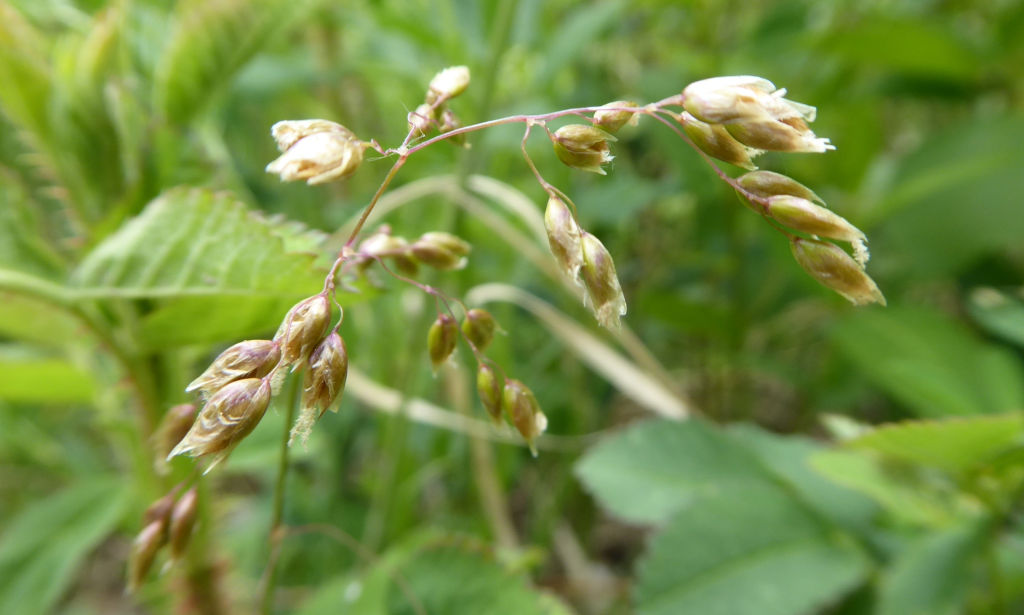
Photo Credit: Annette Le Faive on iNaturalist
Scientific Name: Anthoxanthum hirtum
Season: April – August
Sweetgrass is one of the four plants (tobacco, sage, red cedar and sweetgrass) considered sacred to indigenous peoples as they represent each of the four directions and the traditional medicine wheel. Like sage, it is used to smudge and purify the spirit of people, places and objects.
It is sometimes referred to as the hair of Mother Earth and is considered an important sacred gift from the Creator in indigenous cultures. After the grass is harvested, it is carefully braided into three sections representing mind, body and spirit. It is also used as a medicinal tea and traditionally weaved into mats, bags and clothes.
9. Goldenrod

Photo Credit: Charles Willis on iNaturalist
Scientific Name: Solidago canadensis
Season: April – November
Goldenrod is easy to identify and it is one of the most abundant medicinal plants growing in Alberta and British Columbia. Goldenrod flowers and leaves can be dried to make tea to relieve inflammation and they can be used like spinach in salads, soups and other dishes.
The genus name ‘Solidago’ is derived from Latin and means “to heal or make whole”. It has a long history in traditional herbal medicine around the world as a tonic to increase strength and vitality. It is considered an “ecological superstar” as an important native plant for pollinators, breeding sites and healthy soils (its pleasant-smelling pollen doesn’t affect seasonal allergies like ragweed).
10. Stinging Nettle
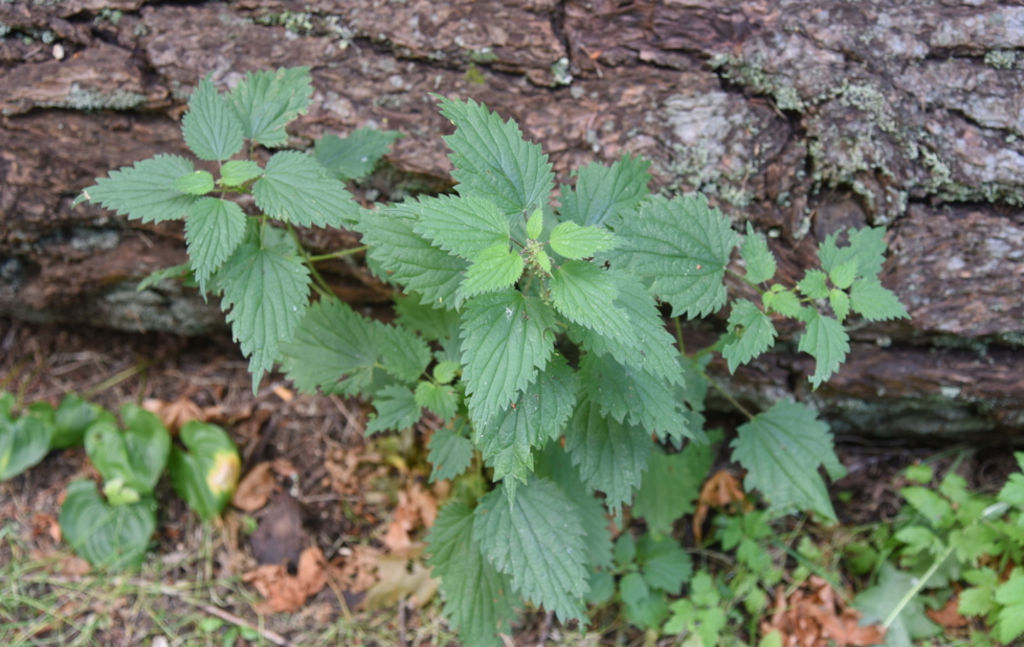
Photo Credit: Brian Starzomski on iNaturalist
Scientific Name: Urtica dioica
Season: March – November
Stinging nettle is one of the most common medicinal plants found across North America. It is a native perennial that grows in moist soils from the sub-alpine mountains to the prairies. You can remove the sharp nettles by lightly boiling them in water or by drying them.
Its medicinal uses may help reduce inflammation, ease joint pain, improve circulation, blood pressure and blood sugar levels. It contains many important minerals (calcium, magnesium, phosphorus, potassium and sodium) and vitamins (A, C, K and several B vitamins), it is high in protein and fats, and all of the essential amino acids. It makes an excellent herbal tea that is very relaxing to drink.
Edible And Medicinal Plants Are Everywhere
The wild plants I have covered here are just the tip of the iceberg. Here is just a few of the other wild plants that are used in traditional medicine systems that you will find growing in BC and Alberta:
1. Big Sagebrush (Artemisia tridentata)
2. Wild Mint (Mentha arvensis)
3. Bitterroot (Lewisia rediviva)
4. Yellowcress (Rorippa palustris)
5. Marsh Marigold (Caltha palustris)
6. Broadleaf Plantain (Plantago major)
7. Common sunflower (Helianthus annuus)
8. Buffaloberry (Shepherdia canadensis)
9. Sweetvetch (Hedysarum alpinum)
10. Saskatoon berries (Amelanchier alnifolia)
If you have any questions feel free to ask me in the comments or contact me directly.
- Chephren Lake And The Mistaya River Valley - July 1, 2024
- Mindfulness And The 4 Steps of Attention Restoration Theory - June 29, 2024
- 3 Pillars Of An Ecotourism Marketing Strategy For Selling Travel Experiences - June 29, 2024

